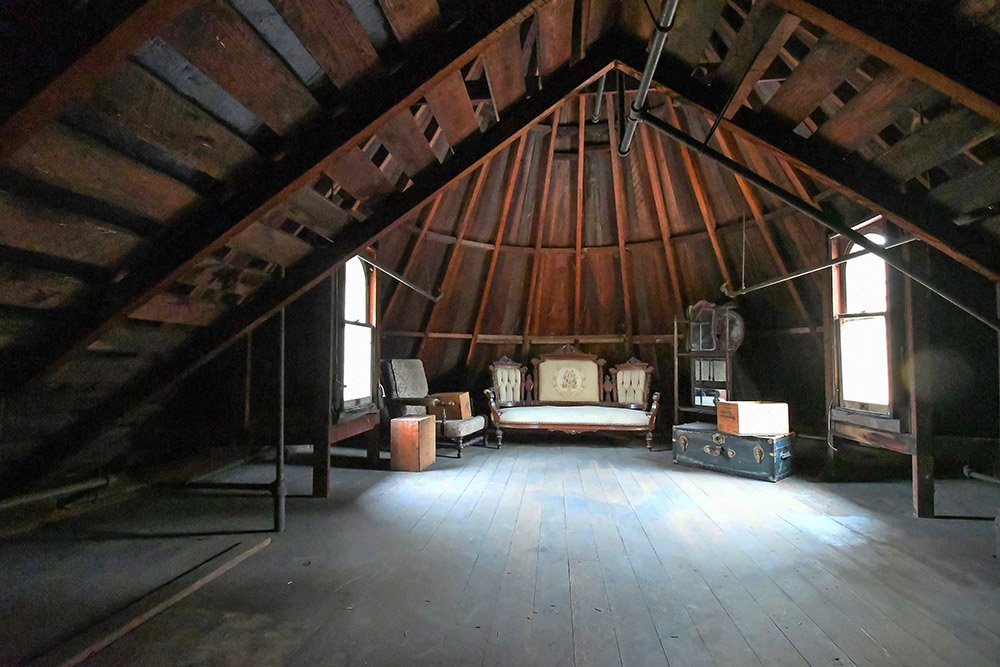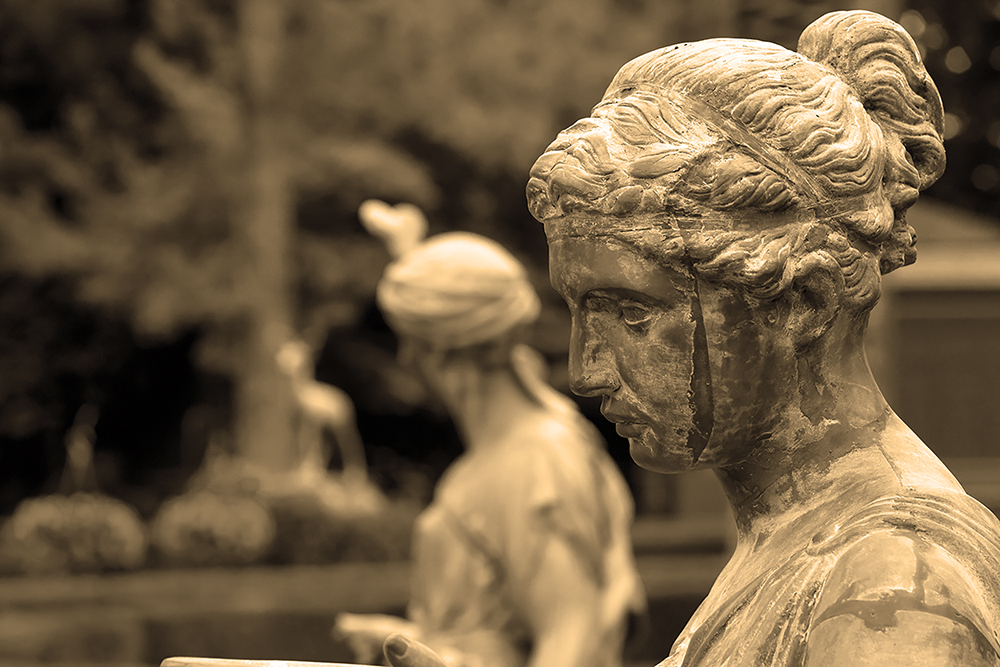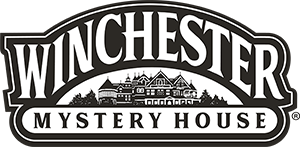Even by today’s more accepting standards, Sarah Pardee Winchester might be considered an enigma. After all, think about a neighbor that moves in and secures the perimeter of her yard because she values privacy. That may not seem so strange on its own, but then you start adding to that: an exclusively black wardrobe that includes head-to-toe dresses with a black veil that always obscures her face; gnarled fingers gripping fancy walking canes; a diminutive size that puts her a few inches under 5-feet-tall in stocking feet; and transportation by horse-drawn carriage when others have moved on to cars.
Okay, even today, rumors would fly in a small town. But 100 years ago, there’s no doubt you’d easily be convinced that this strange new neighbor talks to dead people. After all, in the late 1800s, the Brothers Grimm fairy tales took hold as did Spiritualism—when many believed science, a discipline rapidly shedding light on life’s mysteries, would eventually prove that, indeed, the dead could talk to us.

Sure enough, the gossip mills ignited anytime Sarah Pardee Winchester acted, well, like a man: living alone, buying property, fighting for ownership rights, hiring men, and experimenting in architecture and design. According to the grapevine, she was constructing a labyrinth in her Santa Clara Valley farmhouse at the bidding of the spirits whom she conjured up nightly. No matter that communing with the other world was mainstream in the Victorian age, practiced by White House heavy hitters like Abraham Lincoln’s wife, Mary Todd Lincoln, and Franklin D. Roosevelt.
During that time, mediums and planchettes (Ouija board) were tools that opened the doorways to the other world, a place being rapidly populated by victims of the Civil War and mysterious diseases (tuberculosis, cholera, scarlet fever and influenza).
The famed Stanford’s, new California residents themselves, hired a medium when their son died of typhoid fever in 1884. Not long after their spiritual quest, the grieving couple decided to build a university. Some believe the order came from the other world. The Stanfords denied it.
But what can’t be denied is that in San Jose in the late 19th century, it wasn’t hard to find a spiritualist. Notable forums included The First Spiritual Union and The White Temple, each with their own mediums. A notable member of the elite—Mary Hayes Chynoweth—practiced spiritualism in the city as well.

But the question is, Did Sarah?
According to legend, yes. Tour Guides at the Winchester Mystery House will point out smoking guns: the occurrences of the number 13, the séance room, the spider-web motif, and odd architectural choices. Hello, Stairs to Nowhere. The ongoing construction of the house itself was supposedly to appease the spirits killed by the Winchester rifle.
Following her husband’s death in 1881, Sarah traveled to Europe. It’s possible that in her search for meaning, the widow may have found grief relief in intriguing techniques.
In France, Le Droit Humain, a Co-Freemasonry society, would have welcomed Sarah, because, unlike the Freemasons in the U.S., the French group allowed women. Would Sarah have attended a meeting? Maybe. Yes. No. We don’t know. Would Sarah know about Freemasonry? Almost surely. Her interest in architecture, her family’s background in building might have exposed her to that secret society of handshakes, symbols and rituals.

Further, Sarah likely would have visited one of the greatest cathedrals in the world, only 50 miles south of Paris: Chartres Cathedral, financed by the Knights Templar, built by the stonemasons. (The stonemasons organized into the Freemasons in the 14th century).
The church’s labyrinth is a holy grail for a couple mysterious groups—including the Rosicrucian Order, Freemasons, and Knights Templar—who search objects with recurring symbolism to uncover meaning.
Perhaps Sarah ingested all this obscure knowledge and carried these beliefs back to the states.
Or perhaps Sarah became an acolyte of “California-ism,” which offered relief from the past and hope for the future. Kevin Starr’s “Americans and the California dream, 1850-1915” outlined the beliefs.
All one had to do was move cross-country to a sunny and fertile land once littered with gold. There, between the oceans and the mountains, newly formed dreams would come to fruition.
Sign us up.

